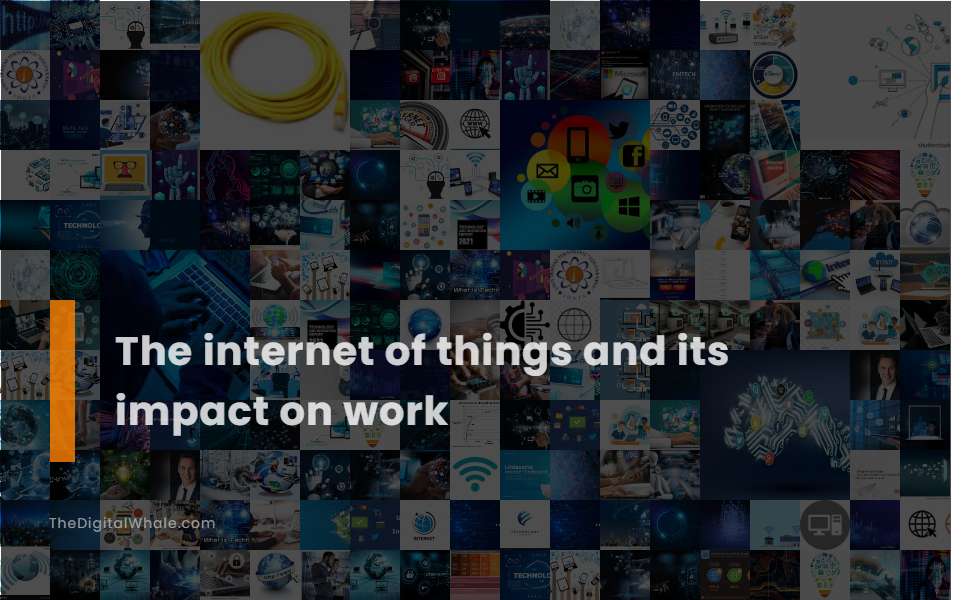The Internet of Things and Its Impact On Work
What is the Internet of Things? What is the impact of the Internet of Things on the business world? Let's find out more about The Internet of Things and Its Impact On Work.

Improved Workplace Safety: Enhances safety by monitoring workplace conditions and mitigating risks.
The Internet of Things (IoT) plays a vital role in enhancing workplace safety across various high-risk industries. By leveraging real-time monitoring of workplace conditions, IoT technologies automate dangerous tasks and facilitate predictive maintenance. This not only leads to significant reductions in workplace injuries and fatalities, as studies by Deloitte and PwC highlight, but also ensures quick responses in crisis situations. In particular, IoT solutions such as condition monitoring sensors, wearables, and human detection security systems are crucial for industrial safety. They empower organizations to actively prevent accidents by monitoring environmental conditions, tracking worker health via wearable devices, and using sensors to detect hazards such as fire and unauthorized access. Through these proactive measures, a safer working environment is achieved, thereby protecting employees and optimizing operational efficiency.
Real-Time Data Access: Provides uninterrupted flow of information, reducing delays and miscommunication.
The Internet of Things (IoT) in the workplace drives efficiency by delivering real-time data access, enabling a continuous and instantaneous flow of information from sensors and devices. This seamless connectivity enhances collaboration and facilitates data-driven decision-making by minimizing delays and miscommunication. By promoting an environment where data is readily accessible, IoT not only saves time but also reduces the need for human intervention, effectively cutting costs. Furthermore, the Internet of Things offers intuitive interfaces and proactive alerts that streamline the data exchange process, opening new avenues for strategic improvements across workplace operations.
Increased Efficiency: Automates processes, reducing the need for human intervention and enhancing overall efficiency.
The adoption of the Internet of Things (IoT) significantly boosts efficiency by automating repetitive tasks, reducing the need for human intervention, and streamlining workflows. This advancement helps to eliminate bottlenecks, reduce errors, and minimize costs, ultimately enhancing overall productivity and operational efficiency. Implementing IoT Automation in the workplace further improves operational efficiency by employing smart devices and sensors to optimize resource utilization, automate tasks, and foster better collaboration. This leads to reduced energy costs, improved task management, and a more productive work environment.
Cost Reduction: Optimizes inventory management, reduces utility costs, and streamlines logistics operations.
The Internet of Things (IoT) significantly reduces costs by optimizing inventory management through real-time tracking and preventing overstock and stockouts, reducing utility costs by precision monitoring and adjusting resource consumption, and streamlining logistics operations through predictive maintenance and optimized resource allocation. For more information on how IoT serves as a differentiator to transform utilities management, visit IoT For All.
Higher Productivity: Improves internal processes and customer service through detailed data analysis.
The Internet of Things (IoT) enhances workplace productivity by automating repetitive tasks, optimizing workflows, and creating a more comfortable and user-controllable working environment. It also improves internal processes and customer service through detailed data analysis, enabling faster and more accurate task completion, streamlined communication, and better-informed business decisions. To explore more about how IoT is transforming workplace dynamics, you can visit the Smart Spaces Blog for an in-depth understanding of its potential.
Related:
What is the classification of a freelancer in the United States? What factors are changing the nature and availability of jobs in the platform economy? Let's find out more about The Changing Nature of Work: the Gig Economy.
Remote Work Enablement: Supports remote work by automating processes and enhancing communication.
The Internet of Things (IoT) enables remote work by automating various processes, such as scheduling, resource management, and communication, using AI-powered assistants and smart devices, thereby enhancing productivity and efficiency in remote work environments. For more insights on how these technological advancements are transforming the workplace, visit the article on Reworked.
Enhanced Operational Efficiency: Optimizes office spaces using AI software, smart voice-enabled speakers, and other IoT solutions.
The Internet of Things (IoT) enhances operational efficiency in the workplace by utilizing AI software, smart voice-enabled speakers like Google Assistant, Alexa, or Siri, and other IoT solutions to automate tasks, set reminders, schedule appointments, and optimize resource utilization, such as smart LED lights and thermostats, to create a more efficient and productive office environment. Discover more about these advancements on the Intuz Blog.
Improved Employee Engagement: Increases productivity and motivation through new working methods and real-time data communication.
The Internet of Things (IoT) enhances employee engagement by improving communication, teamwork, and the overall work environment. It enables real-time data exchange, automates minor tasks, and promotes a more comfortable and productive workplace, leading to increased employee motivation and productivity.
Added Flexibility: Allows employees to work from anywhere, improving work-life balance and flexibility.
The Internet of Things (IoT) significantly enhances flexibility for remote workers by enabling them to complete tasks from anywhere, using smart devices and automated systems that streamline processes, reduce costs, and improve communication, thus improving work-life balance and overall flexibility. IoT technology allows workers to perform vital tasks remotely, creating a customized and personalized workspace that enhances collaboration, security, and productivity. To explore more about how IoT is transforming the workplace, visit the comprehensive insights on IoT in the Digital Workplace, giving employees more freedom and flexibility to work from their desired locations.
Predictive Maintenance and Analytics: Uses big data and predictive analysis to detect potential issues and improve business processes.
IoT Predictive Maintenance leverages IoT sensors and data analytics to monitor equipment performance in real-time, using advanced predictive algorithms and machine learning to detect potential issues before they occur. By doing so, it significantly reduces downtime, extends asset life, and optimizes business operations. For more insights on the transformative impact of IoT in predictive maintenance, you can explore the comprehensive discussion on OneData Software's blog.
Related:
Invalid input. Please try again. How can technology help increase workplace productivity? Let's find out more about Tips for Improving Productivity with Technology.
